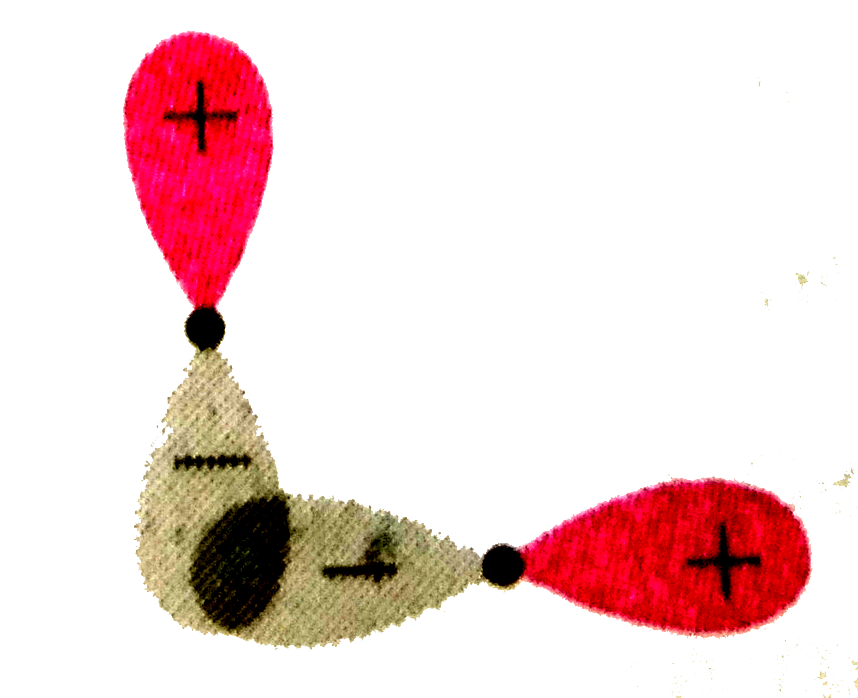Which of the following orbital overlapping is not possible according to VBT?



All of these
The correct Answer is:D
To determine which orbital overlapping is not possible according to Valence Bond Theory (VBT), we need to analyze the types of overlaps mentioned in the options.
1. Understanding Orbital Overlaps:
- VBT states that certain types of orbital overlaps can form bonds. The two main types of overlaps are sigma (σ) and pi (π) overlaps.
- Sigma bonds are formed by the head-on overlap of orbitals, while pi bonds are formed by the side-to-side overlap of p orbitals.
2. Identifying the Overlaps:
- Let's consider the types of overlaps mentioned in the options:
- s-p overlap: This is a sigma bond (σ) formed by the overlap of an s orbital and a p orbital.
- p-p overlap: This can form either a sigma bond (σ) or a pi bond (π) depending on the orientation of the p orbitals.
- s-s overlap: This forms a sigma bond (σ) as well.
3. Analyzing Each Option:
- Option 1: s orbital and p orbital forming a pi bond (π). According to VBT, this is not possible because s orbitals cannot participate in pi bonding.
- Option 2: p orbital and p orbital forming a pi bond (π). This is possible, but if one is sigma and the other is pi, that specific overlap is not allowed.
- Option 3: p orbital and p orbital forming a sigma bond (σ). This is possible if they are aligned correctly.
4. Conclusion:
- The overlaps that are not possible according to VBT are:
- s-p forming a pi bond (π).
- p-p forming a sigma bond (σ) with opposite polarity.
Thus, the answer to the question is that the overlap of an s orbital with a p orbital to form a pi bond is not possible according to VBT.
- VBT states that certain types of orbital overlaps can form bonds. The two main types of overlaps are sigma (σ) and pi (π) overlaps.
- Sigma bonds are formed by the head-on overlap of orbitals, while pi bonds are formed by the side-to-side overlap of p orbitals.
- Let's consider the types of overlaps mentioned in the options:
- s-p overlap: This is a sigma bond (σ) formed by the overlap of an s orbital and a p orbital.
- p-p overlap: This can form either a sigma bond (σ) or a pi bond (π) depending on the orientation of the p orbitals.
- s-s overlap: This forms a sigma bond (σ) as well.
- Option 1: s orbital and p orbital forming a pi bond (π). According to VBT, this is not possible because s orbitals cannot participate in pi bonding.
- Option 2: p orbital and p orbital forming a pi bond (π). This is possible, but if one is sigma and the other is pi, that specific overlap is not allowed.
- Option 3: p orbital and p orbital forming a sigma bond (σ). This is possible if they are aligned correctly.
- The overlaps that are not possible according to VBT are:
- s-p forming a pi bond (π).
- p-p forming a sigma bond (σ) with opposite polarity.
Topper's Solved these Questions
- PRACTICE PAPER 1BOOK - NCERT FINGERTPS ENGLISHCHAPTER - PRACTICE PAPER 1EXERCISE - Practice Paper 1
44 Videos
- ORGANIC CHEMISTRY-SOME BASIC PRINCIPLES AND TECHNIQUES BOOK - NCERT FINGERTPS ENGLISHCHAPTER - ORGANIC CHEMISTRY-SOME BASIC PRINCIPLES AND TECHNIQUES EXERCISE - Assertion And Reason
12 Videos
- PRACTICE PAPER 2BOOK - NCERT FINGERTPS ENGLISHCHAPTER - PRACTICE PAPER 2EXERCISE - Practice Paper 2
44 Videos
Similar Questions
Which of the following electronic configuration is not possible according to Hund's rule?
View SolutionWhich of the following atomic orbitals overlapping are not allowed

View SolutionIf molecular axis is Z then which of the following overlaping is not possible
View SolutionWhich pf the following orbitals are not possible?
2d,4f,4g and 6d
View SolutionWhich of the following is stablised by overlapping of p-orbitals?
View SolutionWhich of the following overlapping is not present in XeO3 molecule ?
View SolutionWhich of the following overlapping is not present in XeO3 molecule ?
View SolutionWhich of the following orbitals are possible ? (2s,1p,3f,2p)
View SolutionWhich of the following angular momentum is not possible for electron in Bohr’s orbit?
View SolutionWhich of the following orbital are and possible ?
2d,4f,4gand6d
View Solution
